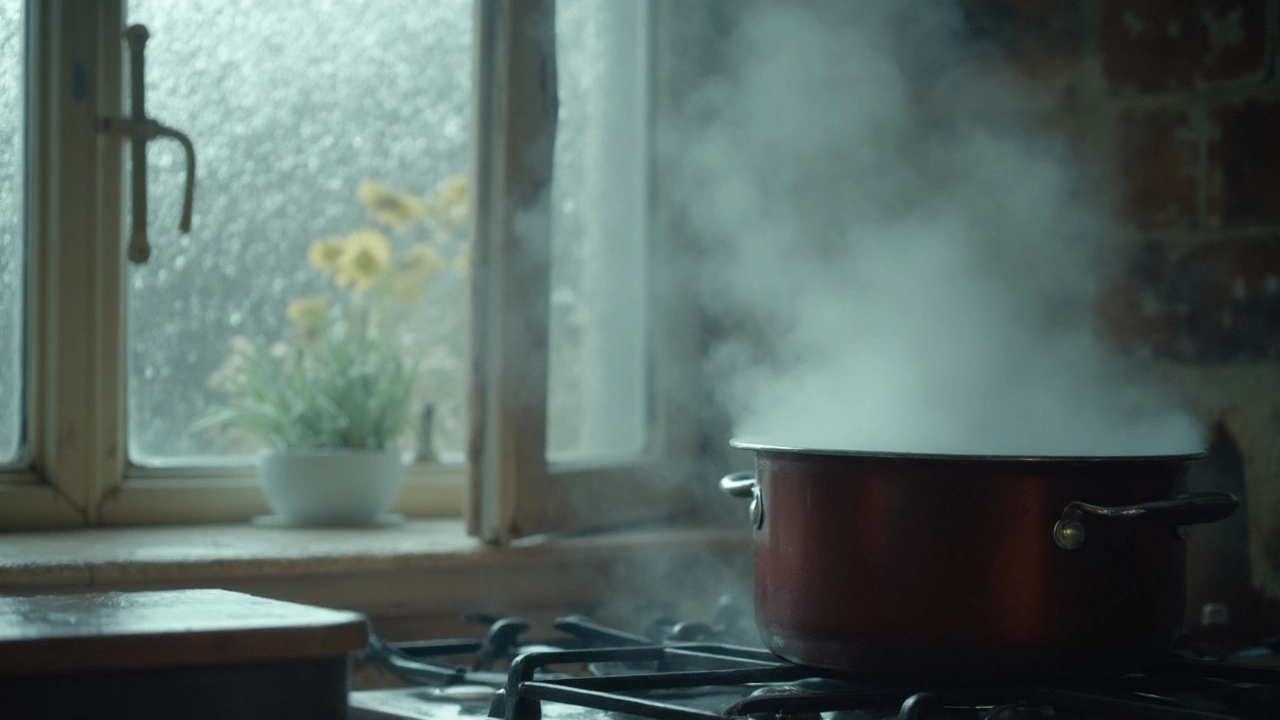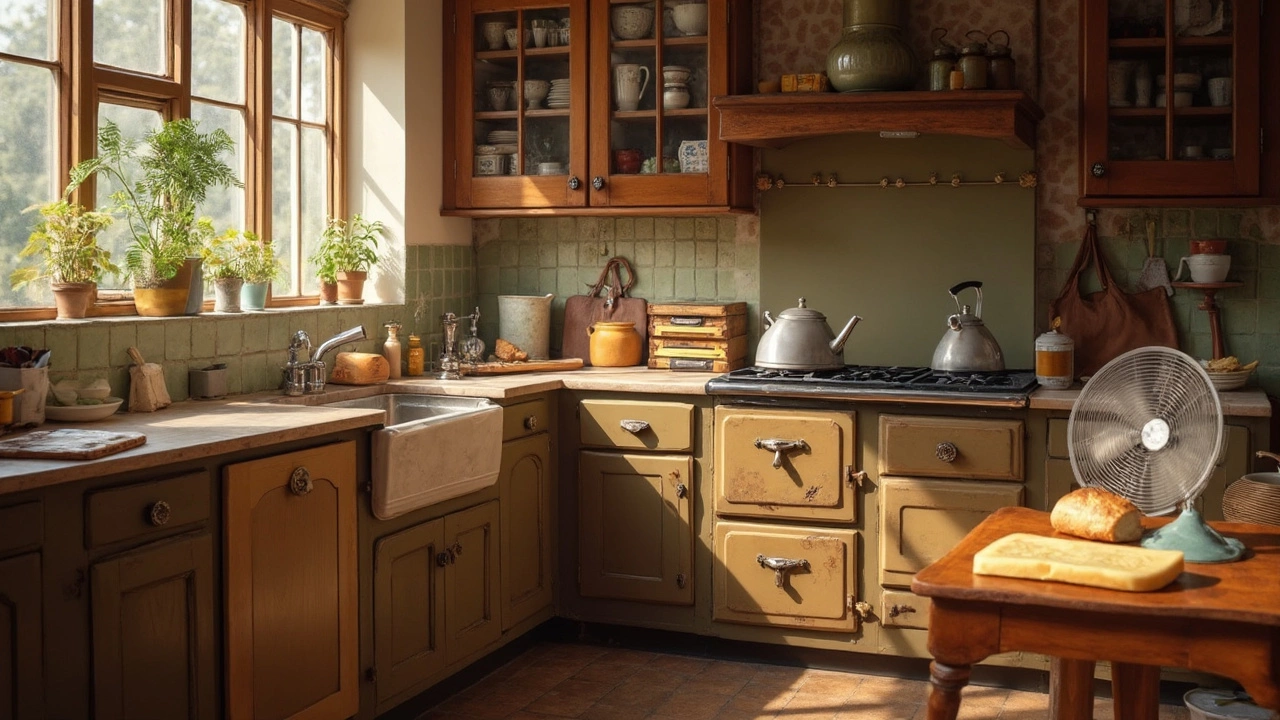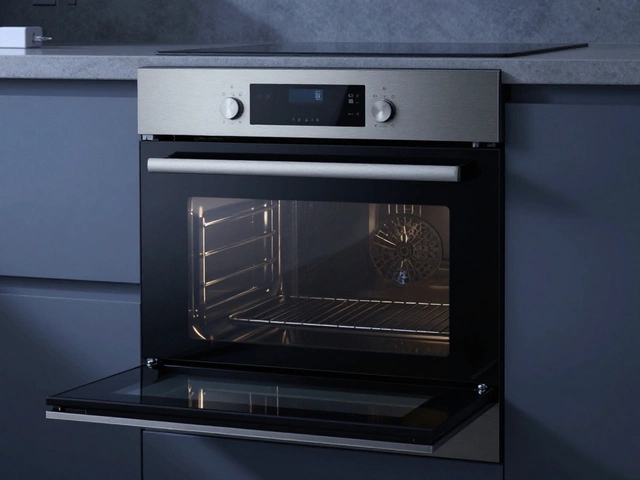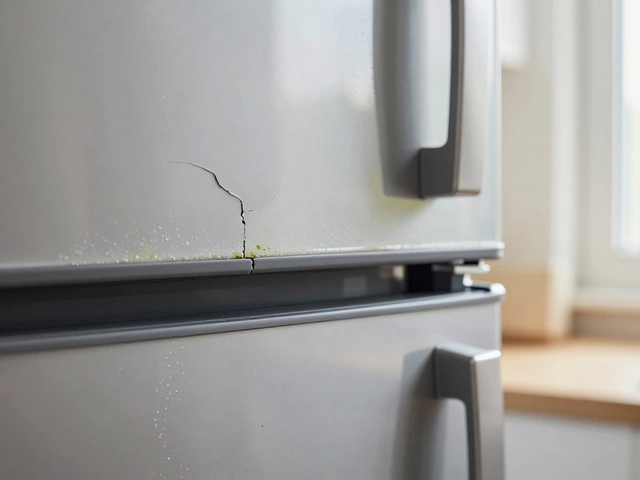Think you can skip the extractor fan in your kitchen? There’s a staggering number of UK households (almost 30%) that never switched one on, according to a 2024 consumer survey. Maybe it’s your new build, your grandma’s Victorian flat, or your first-time kitchen facelift—so the question lands: is an extractor fan actually a legal must, or just hype cooked up by overzealous installers and gadget sellers? I’ve heard arguments from both sides, especially after smelling last night’s curry for days (thanks, Tristan). Let’s dig into the hard facts and bust some myths. Your lungs—and your landlords—might thank you.
What Do UK Building Regulations Say About Kitchen Extractor Fans?
Cut through the legal jargon, and what do the rules really demand? Start with UK Building Regulations Part F, which sets the vibe for ventilation laws. Since 2006, the government has gotten stricter about airflow, not just to prevent your kitchen from smelling like an all-night fried chicken joint, but to tackle condensation, mold, and indoor air pollution. The official lingo says: if you refurbish or build a kitchen, mechanical extract ventilation is required if you don’t have a window that opens directly and easily to the outside. This applies whether you’re doing a brand-new kitchen or a serious renovation.
Want hard numbers? Here you go: the regulation says the extraction fan needs a minimum air extraction rate of 30 liters per second if it’s installed above your hob (that’s the stove, to avoid any confusion). If the fan isn’t directly above the hob, the minimum bumps up to 60 liters per second elsewhere in the kitchen. These values aren’t up for interpretation; if your kitchen doesn’t meet these targets, you could face compliance issues when selling or renting your home. Lenders and insurers are starting to care, too. The rules also insist that air is expelled outside, not just recirculated back into the room (so those charcoal filter-only fans often don’t cut it for legal compliance).
Now, no one in the UK is kicking down doors to check your extractor fan (unless you’re renting out properties), but selling, signing off, or renting newly refurbed places demands paperwork showing you’re up to code.
One more sticky point: if your kitchen is open-plan and flows into, say, your living room, the same extraction rates apply. So, even modern flats with swanky design need to play ball with the law.
Is It Ever Legal to Have No Extractor Fan in the Kitchen?
You might’ve heard about kitchens with no fan at all—like the ones your parents cooked in, right? Retro kitchens often just have a window slapped above the sink, maybe a vent brick hiding in the wall. If your property pre-dates 2006 and hasn’t been renovated since, you’re probably not breaking the law by lacking mechanical extraction. But here’s the catch: any major refurb or extension triggers new rules. Install a new kitchen, open up the walls, or convert the space? You’ll need to upgrade the ventilation, even if granddad’s fried breakfasts never caused a whiff of mold.
Legal gray areas do crop up. For instance, a landlord letting an older home without upgrading the kitchen’s ventilation isn’t usually forced to retrofit a fan immediately, but they can face headaches under health and safety laws, especially if tenants complain about damp or poor air quality. Councils sometimes enforce upgrades where conditions are considered hazardous, particularly with families or vulnerable tenants. If mold or damp hits a certain threshold, landlords might be told to install an extractor fan pronto to deal with the issue.
Don’t try shortcut tricks like cutting a hole in the ceiling or relying on extractor hoods that just recirculate air. Those models often aren’t acceptable by UK law, unless accompanied by proper mechanical ventilation exhausting outdoors. The only wiggle room, according to Part F, is if you have "equivalent means of ventilation"—which pretty much means a window that opens wide right over the cooker. Not so great when you’re freezing in December, right?

Why Even Bother? Benefits of a Kitchen Extractor Fan
Sure, laws are one thing, but what’s in it for you and your family? First up, air quality. Cooking, especially over gas hobs, gives off nitrogen dioxide, carbon monoxide, fine particles (PM2.5), and moisture—all bad news for people with asthma, young kids, or older folks. Public Health England’s 2023 report linked poor indoor air (think: leftover bacon fumes, steamy kitchens) with increased risk of respiratory illness, headaches, and worse sleep. Ever noticed condensation dripping down the tiles or black spots on your ceiling? That’s not just unsightly; it’s mold. An extractor keeps things drier by whipping out that extra moisture.
Can an extractor save you money? Oddly, yes. By shifting moisture out, you cut down on mold and damp repairs. Less lingering food smell means less need to deep clean walls and cupboards. Plus, modern extractor fans run quietly and cheaply, sometimes powered by ultra-efficient DC motors that, according to an EU study from 2023, use less than £4 worth of electricity a year if run for a couple of hours a day.
People often think opening a window does the trick, but an extractor moves stale air out way faster and doesn’t make your kitchen an icebox in winter. For families with allergies (like my son Tristan deals with), keeping the air clear isn’t just about comfort—it really helps everyone breathe easier. You also get a bump in value if you eventually sell: estate agents consistently note homes with proper ventilation score higher with buyers. It’s an underrated upgrade that’s as sensible as swapping out old light bulbs for LEDs.
| Ventilation Type | Air Quality Improvement | Works in All Weather? | Compliant with UK Law (Post-2006)? |
|---|---|---|---|
| Open Window | Moderate | No (Cold spells, rain) | No |
| Recirculating Fan | Low | Yes | No |
| Extractor Fan (Ducted Outside) | High | Yes | Yes |
Common Myths About Kitchen Extractor Fans—Busted
Let’s crack the most persistent rumors people pass around kitchen forums, or drop during awkward house parties. “Extractor fans are just for the ultra-neat types—they’re totally optional.” Not true. Anyone with a new-build or recently renovated kitchen, or planning to rent or sell, needs to play by Building Regs rules. “But I heard you just need a recirculating hood to be legal.” Here’s where so many get it wrong: most hoods with charcoal filters only recirculate air—they don’t get you legal compliance, except in some rare, clearly specified circumstances involving certified equivalent ventilation.
“If I install an extractor, I’ll freeze in winter.” A solid extractor unit will have a backdraft shutter or damper that prevents cold air coming in from outside. Modern models can even sense humidity levels and run only when needed, so you’re not left with a draughty fan blasting 24/7.
“They’re noisy, ugly, and impossible to keep clean.” Maybe that was true 15 years ago, but tech has moved on fast. Extractor fans now come whisper-quiet (some dip under 50 dB, quieter than chatting in your living room) and with sleek glass or hidden ceiling options. Most filters are dishwasher-safe or need just a quick rinse every couple months. The real mess comes from not having one: try scrubbing months-old grease off your ceiling sometime and see which you prefer.
Another myth: extractor fans gobble up electricity. Like I mentioned earlier, modern fans are ridiculously efficient—annual running costs are pocket change. And the payoff is real: improved health, fewer repairs, better kitchen smell.
Worried about the cost of install? While a quick DIY wall fan might start at £50-£100, a good integrated hood or ceiling extractor may tip past £300 including fitting, especially if you’re ducting through a tricky brick wall. But that upfront cost gets balanced out quickly by the wins in health and home value.

Practical Tips for Choosing and Maintaining a Kitchen Extractor Fan
If you’re convinced you need a fan—by law or your nose—it pays to choose the right one. Start with size. Measure your kitchen length x width x height in meters, multiply together to get the volume in cubic meters. The standard advice is your fan should extract the full air volume of the room at least 10 times per hour. For example, if your kitchen is 4x3x2.5m, that’s 30m³; you’ll want a fan rated for at least 300m³/hr. That’ll handle most smells and moisture after a Sunday roast.
Not all hoods are created equal. For best results, look for a model that vents directly outside—sometimes called a ducted or extraction hood—not just one with internal filters. If you’re designing from scratch, position the hood directly over the hob for max effectiveness and compliance.
The biggest rookie mistake is forgetting maintenance. Remember to clean or replace filters every couple of months if you cook daily, or sooner if you love frying food. Check for blockages in the ductwork at least twice a year—birds sometimes love to nest in open vents. If your fan suddenly rattles or sucks less air, it might just need a deep clean or a cheap replacement part. Regular TLC means better performance, less noise, and a longer lifespan.
Don’t ignore smart upgrades. Some extractors connect to home assistants (like Alexa or Google) and can be set on timers or humidity sensors. They’re a blessing for forgetful cooks and won’t cost a fortune. If you’re upgrading during a full kitchen redo, ask the installer for advice about duct routing—short, direct runs to an outside wall work best. Avoid too many bends to keep suction high.
Final tip: keep your paperwork. If you’re trying to sell, remortgage, or rent your house, Building Control or any sharp-eyed buyers/agents may ask for proof you’re up to code. Snap a photo of the installed unit, keep its specs handy, and stash any warranty docs. It’s a simple move that can make future transactions a lot smoother.





